RECENT ARTICLES

Meet the rock guitarist who helped NASA land on an asteroid
Brian May is the co-founder of the band Queen—and an astrophysicist. He talks to National Geographic about consulting on NASA missions and blending art with science. As a working-class youth in London, Brian May first built his own telescope. Then he built his own electric guitar. Two days after earning a bachelor’s degree in physics, he was onstage with his band, opening for Pink Floyd. It was 1968.Today May, 76, is known as one of the greatest guitarists in rock history. This month he’s back on the road with the latest incarnation of Queen, the legendary band he co-founded with Roger...…Brian May is the co-founder of the band Queen—and an astrophysicist. He talks to National Geographic about consulting on NASA missions and blending art with science. As a working-class youth in London, Brian May first built his own telescope. Then he built his own electric guitar. Two days after earning a bachelor’s degree in physics, he was onstage with his band, opening for Pink Floyd. It was 1968.Today May, 76, is known as one of the greatest guitarists in rock history. This month he’s back on the road with the latest incarnation of Queen, the legendary band he co-founded with Roger...WW…
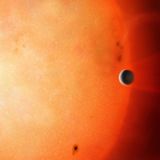
Bizarre new planet is largest known rocky world, 40 times as massive as Earth
Please be respectful of copyright. Unauthorized use is prohibited.About 730 light-years away, not far on the scale of our galaxy, an utterly bizarre planet orbits a sun-like star. Big, dense, and tightly tethered to its home star, the planet is unlike anything astronomers have yet seen—either in our own solar system or afar.The roasted world known as TOI-849b is the most massive rocky planet ever observed, with as much as 40 Earths’ worth of material crammed inside. Perplexingly, TOI-849b’s tremendous bulk suggests that it should be a giant, gassy world like Jupiter, yet it has almost no...…Please be respectful of copyright. Unauthorized use is prohibited.About 730 light-years away, not far on the scale of our galaxy, an utterly bizarre planet orbits a sun-like star. Big, dense, and tightly tethered to its home star, the planet is unlike anything astronomers have yet seen—either in our own solar system or afar.The roasted world known as TOI-849b is the most massive rocky planet ever observed, with as much as 40 Earths’ worth of material crammed inside. Perplexingly, TOI-849b’s tremendous bulk suggests that it should be a giant, gassy world like Jupiter, yet it has almost no...WW…

My dad launched the quest to find alien intelligence. It changed astronomy.
Please be respectful of copyright. Unauthorized use is prohibited.In the spring of 1960, a 29-year-old astronomer with streaks of preternaturally white hair and a devil-may-care attitude set out to tackle one of humanity’s most existential questions: Are we alone in the universe?, then an astronomer at the , was gearing up to search for radio whispers from faraway civilizations that might be sailing the cosmic sea. For such a grand quest, he had a budget of $2,000 and access to a radio telescope thought to be sensitive enough to detect transmissions from any potentially broadcasting...…Please be respectful of copyright. Unauthorized use is prohibited.In the spring of 1960, a 29-year-old astronomer with streaks of preternaturally white hair and a devil-may-care attitude set out to tackle one of humanity’s most existential questions: Are we alone in the universe?, then an astronomer at the , was gearing up to search for radio whispers from faraway civilizations that might be sailing the cosmic sea. For such a grand quest, he had a budget of $2,000 and access to a radio telescope thought to be sensitive enough to detect transmissions from any potentially broadcasting...WW…
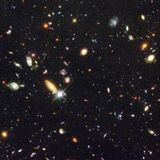
When Hubble Stared at Nothing for 100 Hours
Please be respectful of copyright. Unauthorized use is prohibited.In 1995, astronomer Bob Williams wanted to point the Hubble Space Telescope at a patch of sky filled with absolutely nothing remarkable. For 100 hours.It was a terrible idea, his colleagues told him, and a waste of valuable telescope time. People would kill for that amount of time with the sharpest tool in the shed, they said, and besides — no way would the distant galaxies Williams hoped to see be bright enough for Hubble to detect.Plus, another Hubble failure would be a public relations nightmare. Perceptions of the...…Please be respectful of copyright. Unauthorized use is prohibited.In 1995, astronomer Bob Williams wanted to point the Hubble Space Telescope at a patch of sky filled with absolutely nothing remarkable. For 100 hours.It was a terrible idea, his colleagues told him, and a waste of valuable telescope time. People would kill for that amount of time with the sharpest tool in the shed, they said, and besides — no way would the distant galaxies Williams hoped to see be bright enough for Hubble to detect.Plus, another Hubble failure would be a public relations nightmare. Perceptions of the...WW…
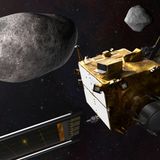
Why NASA plans to slam the DART spacecraft into an asteroid
Please be respectful of copyright. Unauthorized use is prohibited.An enormous asteroid—big enough to leave a six-mile-wide crater and darken the world with dust if it hit Earth—will harmlessly zip by our planet on April 29. The object, called 1998 OR2, is , and while it poses no threat, it will pass within four million miles of our planet—close enough to be classified by NASA as “potentially hazardous,” because it will continue to make close passes to Earth in the future as both objects orbit the sun.“It’s just a whopping big asteroid,” says of the University of Arizona, one of the planet’s...…Please be respectful of copyright. Unauthorized use is prohibited.An enormous asteroid—big enough to leave a six-mile-wide crater and darken the world with dust if it hit Earth—will harmlessly zip by our planet on April 29. The object, called 1998 OR2, is , and while it poses no threat, it will pass within four million miles of our planet—close enough to be classified by NASA as “potentially hazardous,” because it will continue to make close passes to Earth in the future as both objects orbit the sun.“It’s just a whopping big asteroid,” says of the University of Arizona, one of the planet’s...WW…
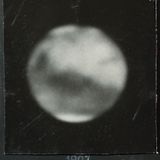
Why are people so dang obsessed with Mars?
The dusty red planet has fascinated us for centuries. Even as we learn more, its mysteries keep us in suspense.It’s a warm night in mid-October, and I’m winding my way up to the on a quest to solve an abiding mystery: Why are Earthlings so dang obsessed with Mars?The observatory’s hilltop dome is open, etching a glowing amber crescent into the autumn darkness. Inside stands a telescope that will help me see Mars as it appeared to observers more than a century ago, when eager astronomers used this instrument in 1877 to confirm the discovery of the two tiny Martian moons, .Tonight UVA...…The dusty red planet has fascinated us for centuries. Even as we learn more, its mysteries keep us in suspense.It’s a warm night in mid-October, and I’m winding my way up to the on a quest to solve an abiding mystery: Why are Earthlings so dang obsessed with Mars?The observatory’s hilltop dome is open, etching a glowing amber crescent into the autumn darkness. Inside stands a telescope that will help me see Mars as it appeared to observers more than a century ago, when eager astronomers used this instrument in 1877 to confirm the discovery of the two tiny Martian moons, .Tonight UVA...WW…
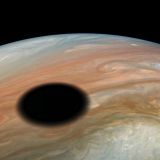
Three exciting alien moons to get first look up close in nearly 20 years
NASA's Juno probe will soon fly close to a trio of Jupiter's intriguing moons, including one that scientists think is among our best bets for finding life beyond Earth.After five years orbiting Jupiter, NASA’s Juno spacecraft is spiraling into the heart of the Jovian system. will plunge the craft into a treacherous, brutal environment—while offering new, dramatic views of three alien worlds. But Juno, sheathed in titanium armor that protects it from harsh radiation, is ready for its mission. And its team back on Earth is eager to follow it from afar during this daring voyage.“I’m really...…NASA's Juno probe will soon fly close to a trio of Jupiter's intriguing moons, including one that scientists think is among our best bets for finding life beyond Earth.After five years orbiting Jupiter, NASA’s Juno spacecraft is spiraling into the heart of the Jovian system. will plunge the craft into a treacherous, brutal environment—while offering new, dramatic views of three alien worlds. But Juno, sheathed in titanium armor that protects it from harsh radiation, is ready for its mission. And its team back on Earth is eager to follow it from afar during this daring voyage.“I’m really...WW…
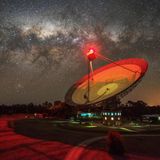
Alien hunters detect mysterious radio signal from Proxima Centauri
Please be respectful of copyright. Unauthorized use is prohibited.Astronomers searching for signs of life beyond Earth have spotted something strange. An as-yet unexplained radio signal appears to be coming from the direction of the star closest to the sun—a small red star roughly 4.2 light-years away called Proxima Centauri. Adding to the excitement, orbit this star, one of which like Earth., a decade-long search for alien broadcasts from the nearest million stars, was using Australia’s to study Proxima Centauri when the team detected the conspicuous signal, which they dubbed BLC-1. The...…Please be respectful of copyright. Unauthorized use is prohibited.Astronomers searching for signs of life beyond Earth have spotted something strange. An as-yet unexplained radio signal appears to be coming from the direction of the star closest to the sun—a small red star roughly 4.2 light-years away called Proxima Centauri. Adding to the excitement, orbit this star, one of which like Earth., a decade-long search for alien broadcasts from the nearest million stars, was using Australia’s to study Proxima Centauri when the team detected the conspicuous signal, which they dubbed BLC-1. The...WW…

Elon Musk: A Million Humans Could Live on Mars By the 2060s
Please be respectful of copyright. Unauthorized use is prohibited.…Please be respectful of copyright. Unauthorized use is prohibited.WW…
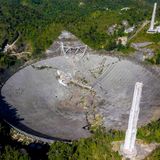
Arecibo Observatory suffers catastrophic collapse
Please be respectful of copyright. Unauthorized use is prohibited.The Arecibo Observatory’s suspended equipment platform just on December 1, falling more than 450 feet and crashing through the telescope’s massive radio dish—a catastrophic ending that scientists and engineers feared was imminent after multiple cables supporting the platform unexpectedly broke in recent months. No one was hurt when the 900-ton platform lost its battle with gravity, according to staff at the observatory in Puerto Rico.The telescope itself has been destroyed, although the full extent of the damage to...…Please be respectful of copyright. Unauthorized use is prohibited.The Arecibo Observatory’s suspended equipment platform just on December 1, falling more than 450 feet and crashing through the telescope’s massive radio dish—a catastrophic ending that scientists and engineers feared was imminent after multiple cables supporting the platform unexpectedly broke in recent months. No one was hurt when the 900-ton platform lost its battle with gravity, according to staff at the observatory in Puerto Rico.The telescope itself has been destroyed, although the full extent of the damage to...WW…